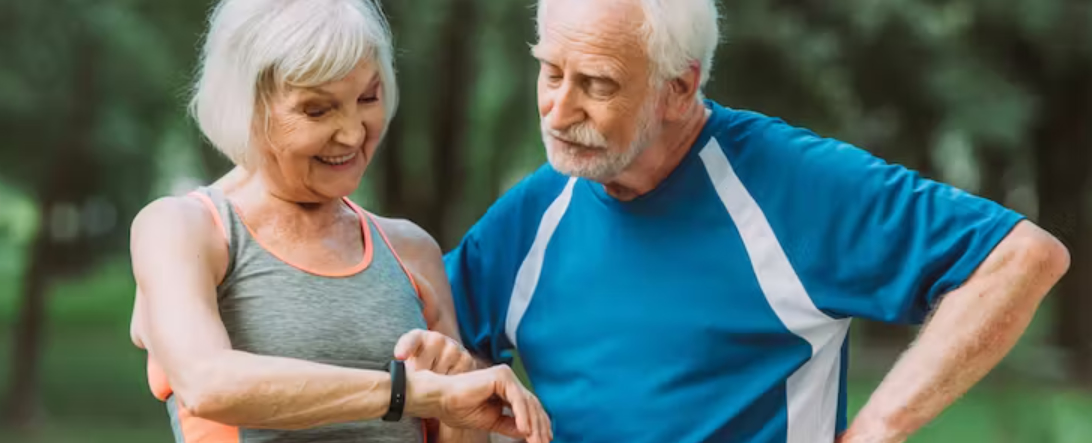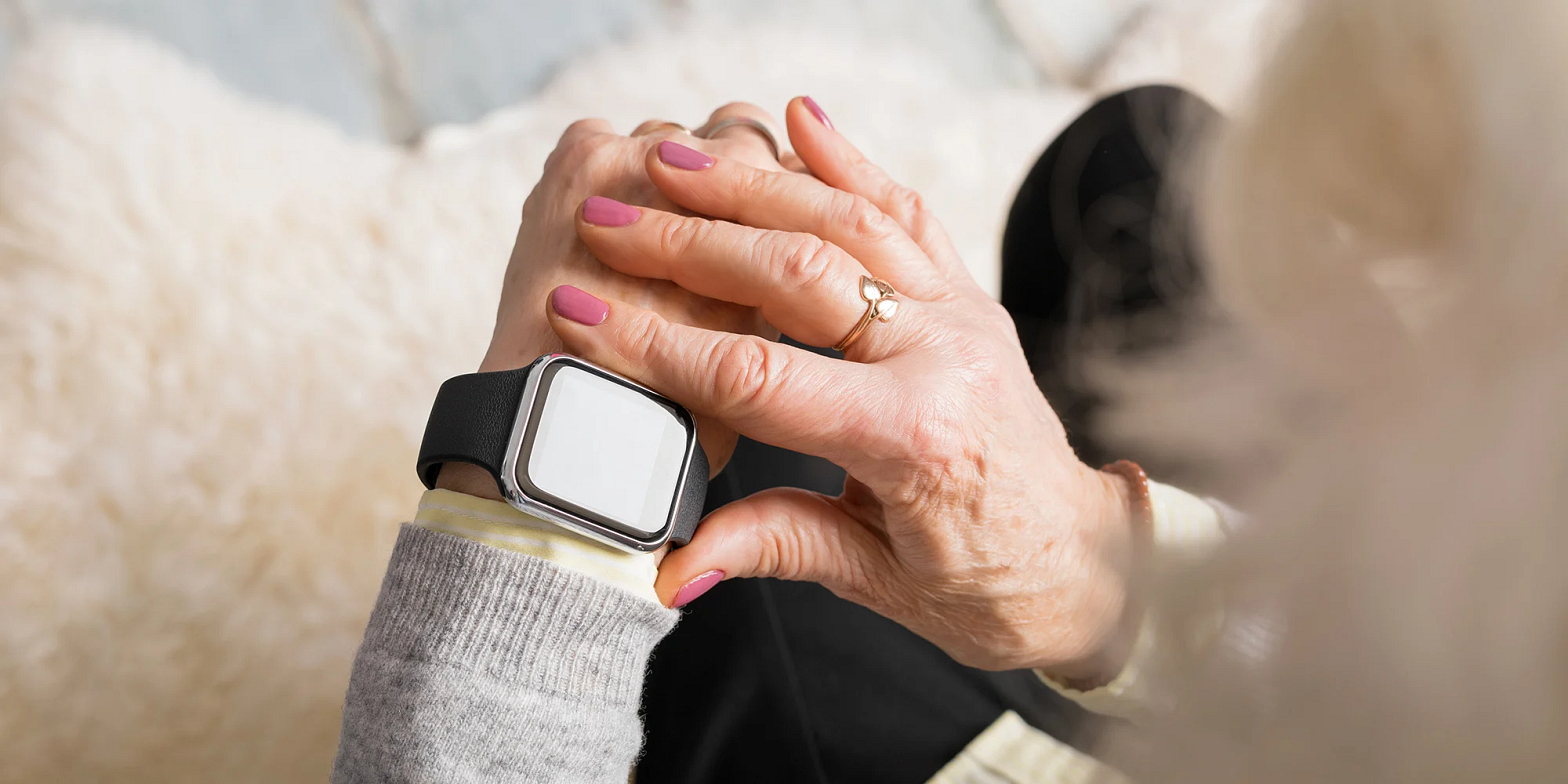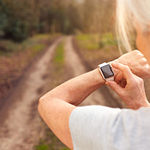Introduction to Wearable Technology and Its Relevance to Elderly Safety
Wearable technology, a rapidly growing field, encompasses a broad range of devices from smartwatches to fitness trackers, designed to seamlessly integrate technology into our daily lives. As the name suggests, these devices are wearable, meaning they can be worn on the body, often as accessories.

The safety of the elderly population is a pressing concern. With the aging US population estimated to double by 2060, ensuring their safety is paramount. Elderly safety encompasses a broad range of issues including fall prevention, emergency response systems, medication reminders, and general health monitoring.
Linking Wearable Technology with Elderly Safety
Wearable technology can play a significant role in ensuring elderly safety. Devices equipped with fall detection sensors, GPS tracking, and health monitoring capabilities can provide real-time data and alerts, potentially saving lives in emergencies. In addition, these devices can also foster independence among the elderly, providing them with confidence and their caregivers with peace of mind.

Consequently, the intersection of wearable technology and elderly safety is not just relevant but crucial. As technology continues to advance, its potential impact on elderly safety becomes increasingly significant.
The Rapid Evolution of Wearable Technology
Wearable technology has experienced a meteoric rise in its development and adoption over the last decade. From initial health tracking devices to today’s sophisticated multi-functional gadgets, the evolution of wearables is a perfect portrayal of the speed at which technology can advance.

Current Trends and Advancements
Today’s wearable technology trends are largely driven by advancements in IoT, AI, and data analytics. These innovations have transformed wearables into essential tools for health monitoring, fitness tracking, and even remote work. From Apple Watch Series 6‘s blood oxygen level monitoring to Fitbit Versa 3‘s voice assistant feature, wearables have become increasingly integrated into our everyday lives.
Future Prospects of Wearable Technology
The future of wearable technology holds immense potential. With advancements in technologies like AI and IoT, the scope for wearables will expand beyond health and fitness to areas like AR/VR, personal safety, and even disease prediction. Furthermore, as the technology becomes more affordable, we can anticipate a more widespread adoption across different demographics.

The Application of Wearable Tech in Elderly Safety
Wearable technology has emerged as a game-changer for ensuring the safety of the elderly. The market is filled with a variety of wearable tech devices dedicated to elderly safety, such as medical alert systems, fitness trackers, GPS location devices, and health monitors.

These devices work by collecting real-time data about the wearer’s physical status and location, and sending alerts to caregivers or medical professionals when irregularities arise. For instance, health monitors track vital signs like heart rate and blood pressure, while GPS devices pinpoint the wearer’s location if they become lost or disoriented.
Benefits and Advantages of Using These Devices
Wearable tech offers numerous benefits for elderly safety. It provides peace of mind to both the wearer and their loved ones, knowing that help is just a button press away. It also facilitates early detection of potential health problems, prompting timely medical intervention. Furthermore, these devices enhance independence for the elderly, allowing them to live safely in their own homes longer. For more insight on the advantages of wearable tech for elderly safety, check out this study.

Case Studies: Wearable Tech Improving Elderly Safety
Wearable technology is making significant strides in enhancing safety for the elderly, with several compelling case studies showcasing their effectiveness.
A study conducted by the National Institute of Health used wearable devices to detect falls in real time. The system was able to alert caregivers immediately, significantly reducing the time before assistance could be provided. The outcome was a notable decrease in fall-related injuries among the elderly participants.
In another study, wearable technology was used for continuous health monitoring. The outcomes showed improved management of chronic diseases and reduced hospital admissions.
Analysis of Outcomes and Effectiveness
The results of these case studies demonstrate not only the potential of wearable technology in improving elderly safety but also their effectiveness in real-world settings. As the technology continues to evolve, the scope for enhancing elderly safety expands. Overall, these wearables are proving to be a game-changer in the realm of elderly safety, marking a significant advancement in healthcare technology.

Challenges and Limitations of Using Wearable Tech for Elderly Safety
While wearable technology has the potential to revolutionize elderly safety, it is not without its challenges and limitations. One of the foremost issues relates to technical difficulties. Elderly individuals may struggle with the operation and understanding of advanced tech due to a lack of familiarity or cognitive decline.

Accessibility and Affordability
Moreover, accessibility and affordability are significant challenges. Many high-end wearable devices are expensive and may not be available to those on a fixed income. This economic barrier could potentially limit the reach and effectiveness of such safety measures.
Data Privacy and Security
Data privacy and security also present substantial concerns. Although wearable tech can collect useful data to enhance elderly safety, there’s an ongoing debate about how this information is stored, used, and protected. There is a clear need for robust data protection measures to ensure the privacy and security of sensitive user information.
In conclusion, while wearable technology holds promise for enhancing elderly safety, these challenges must be addressed to maximize its potential benefits.
Solutions to Overcome the Challenges
As we leverage wearable technology to revolutionize elderly safety, we must address certain challenges such as device functionality and usability, accessibility and affordability, and privacy and data security.
Technological Solutions to Improve Device Functionality and Usability
Improving device functionality and usability can be achieved by incorporating user-friendly interfaces, simplifying device operations, and ensuring comfort in wearable design. Companies like Apple and Fitbit are leading the way in these innovations.

Policy Measures and Initiatives to Address Accessibility and Affordability Issues
Government and private sector initiatives can address accessibility and affordability. Lifeline, a federal program, is an example that provides discounted communication services to eligible low-income consumers.
Strategies to Ensure Privacy and Data Security
Ensuring privacy and data security requires stringent encryption methods, user consent protocols, and regular software updates. FTC’s Guide for Business offers excellent guidelines on how to ensure data security.
The Role of Healthcare Providers and Family Members in Elderly Safety
Healthcare providers play a pivotal role in implementing and managing wearable tech for elderly safety. They are tasked with educating seniors on how to use these devices, ensuring that the technology functions correctly, and interpreting the data to provide optimal care. Given the potential of wearable tech to prevent falls, monitor heart rates, and detect other health anomalies, their involvement is crucial.

Family members, on the other hand, serve as a supportive backbone, assisting the elderly in managing wearable tech and acting upon the health data provided. Their role is indispensable in building a comforting environment for the elderly to embrace this technology with ease.
Collaboration between healthcare providers, family members, and technology companies is key to harness the full potential of wearable tech. Coordinating efforts can result in a more comprehensive approach to elderly safety, ensuring the tech used aligns with both the healthcare objectives and the user’s comfort.
It’s clear that through combined efforts, the potential of wearable technology in revolutionizing elderly safety can be fully realized.
Conclusion: The Future of Wearable Tech in Elderly Safety
In this article, we’ve discussed the monumental impact that wearable technology is having on elderly safety. From monitoring vital signs to emergency alert features, these devices are providing older adults with a newfound sense of security and independence. They’re even aiding in early detection of potential health complications, making them a critical tool in proactive healthcare.
Looking forward, we can expect wearable technology to become even more deeply integrated into elderly safety measures. With advancements in AI, we can anticipate these devices to become more intuitive, responsive, and personalized. For instance, they may eventually be able to predict potential health issues before they become serious.
Ultimately, the future of elderly safety is looking increasingly promising, thanks to the continued evolution of wearable tech. As we continue to harness the power of technology, we can hope to further enhance the quality of life for our elderly population.

Learn more about the potential of wearable technology in elderly safety here.
Conclusion: The Future of Wearable Tech in Elderly Safety
In this article, we’ve discussed the monumental impact that wearable technology is having on elderly safety. From monitoring vital signs to emergency alert features, these devices are providing older adults with a newfound sense of security and independence. They’re even aiding in early detection of potential health complications, making them a critical tool in proactive healthcare.
Looking forward, we can expect wearable technology to become even more deeply integrated into elderly safety measures. With advancements in AI, we can anticipate these devices to become more intuitive, responsive, and personalized. For instance, they may eventually be able to predict potential health issues before they become serious.
Ultimately, the future of elderly safety is looking increasingly promising, thanks to the continued evolution of wearable tech. As we continue to harness the power of technology, we can hope to further enhance the quality of life for our elderly population.

Learn more about the potential of wearable technology in elderly safety here.
.





